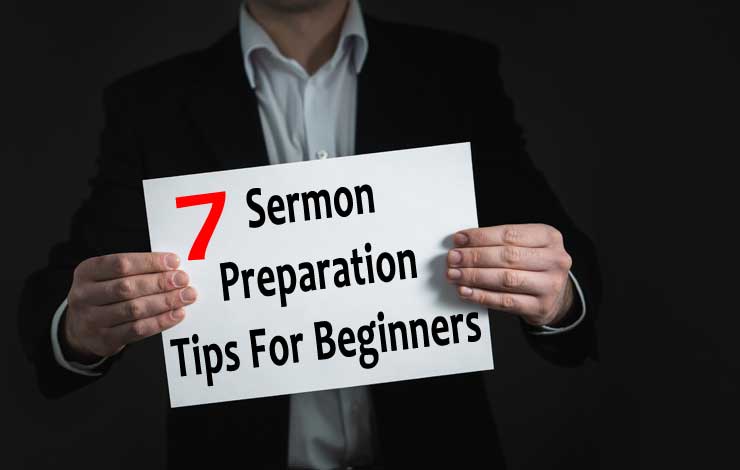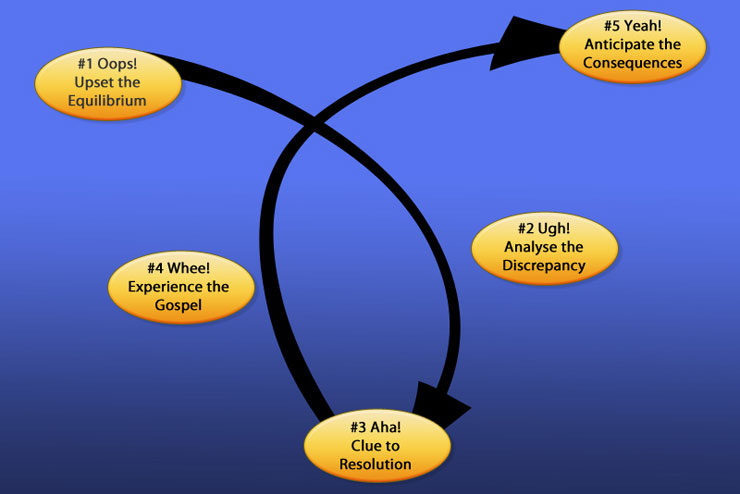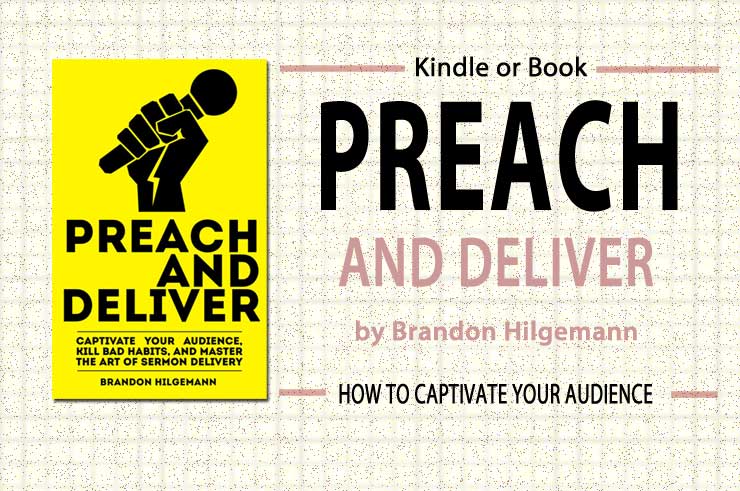7 Sermon Preparation Tips For Beginners: I have been preaching weekly sermons for nearly thirty years or so BUT I have never stopped learning and developing the skills needed for preaching. These are my 7 sermon preparations tips for beginners that I consider helpful for developing one’s preaching skills.

7 Sermon Preparation Tips For Beginners
Ministry has changed since I started over thirty years ago. There was no internet back then. Also there were very few networks to tap into to find someone who would help you in your preaching ministry. We often did it on our own with very little support and very few resources.
But times have changed and with change comes more support and resources. Why not consider the 7 sermon preparation tips for beginners below.
1. Find an Experienced Mentor
You need to find an experienced mentor who will walk with you in the beginning years of your preaching ministry. You need someone who will review your preparation work and evaluate your presentation. This person is someone you must be comfortable with. Not every experienced preacher is a mentor. You need to find someone who is willing to nurture you and be honest with you.
Sometimes books can be your mentors when it comes to sermon preparation and presentation tips. For example, I have just finished reading Preach and Deliver by Brandon Hilgemann (check it out at Amazon). Now this books is not what I call an in depth study on homiletics but I enjoyed the book because it challenged me about different aspects of sermon preparation and presentation. Another example is Communication For A Change by Andy Stanley (check it out at Amazon). Andy Stanley outlines what he does in his preaching and how he teaches others his style of preaching. This book helps you to evaluate your preaching style.

WHAT FOUR THINGS TO LOOK FOR IN A MENTOR?
First, you want your mentor to meet with you regularly. When I mentor someone, I asked them to meet with me on a regularly basis. It is better to talk to someone face to face.
Second, you want your mentor to interact with your work on your sermon outline. This phase involves two parts for the student. First, the student needs to choose a verse of Scripture or passage of Scripture that they feel comfortable with. Second, the student needs to write a sermon outline with content, illustrations and application and also the student needs to write an introduction and a conclusion.
Your mentor needs to interact with your work on the sermon outline, the content, the illustrations, the application, the introduction and the conclusion. Remember, your mentor interacts with your work he does not do your work. I never do their work. I simply talk with students about each one of the above subjects.
I talk to them about the structure of their sermon outline. As a mentor I look for their main preaching point, sub-points and incidental points. I talk to them about the relationships between content, illustrations and application. As a mentor I look at how they illustrate and apply the content of the sermon. I talk to them about the focus of their introduction and the goal of their conclusion. As a mentor I look at how they introduce the main preaching point and how they conclude and apply the main preaching point of the sermon. Overall I usually listen to what they want to achieve and I give advice when needed. After this session students usually write their final manuscript by putting the parts together into a whole.
Third, you want your mentor to review your manuscript. I usually get the students to preach the sermon to me. As a mentor this process is not about the information itself, it is about how the information relates to the different parts of the sermon.
Does the introduction introduce the main preaching point? Is there a natural transition from introduction to the body of the sermon? Is the introduction engaging? Does the sermon body have a natural flow? Is the content illustrated and applied? Are the illustrations appropriate? Are the main points applied sufficiently? Does the conclusion conclude?
In many ways, as a mentor I am looking for the parts to relate to whole and how they transition from one part to the next part of the sermon. Sometimes students will need to shift things around to gain a natural flow. Most students love this part because it brings the sermon together and this gives them great confidence when preaching from the pulpit.
Fourth, you want your mentor to evaluate your presentation. I usually meet with students after they delivered the sermon and discuss their presentation with honest feedback. I tend to give constructive feedback because this is about helping a young preacher develop the skills for preaching. The students usually know when they stuff up. They don’t need me to tell them.
By the way, I know some preachers who listen and evaluate the weekly message with their ministry team every Monday morning.
To me the number one sermon preparation tip for beginners is finding a suitable mentor.
2. Start With A Familiar Bible Passage
If you are starting out in the preaching ministry, it is very important to start with a book of the Bible, a verse or verses or a passage or passages of Scripture that you know very well. When I started preaching, I started with the book of Ephesians not only did I know the book well but I diagrammed the Greek Text, constructed a full exegetical outline of the whole book and wrote a running commentary of whole book while I was at seminary. You could say that I knew the book exceptional well.
I found starting with a text of Scripture that I knew well brought great confidence to my preaching as I was learning the skills as a beginner. I wouldn’t encourage a beginner to start with Revelation or Leviticus. Start with something you know very well!

This is the study process of sermon preparation. This is where you read, observe and interpret the text of Scripture you are going to preach. Howard Hendricks shows the student how this is done in a very practical way in his book, Living By The Book (check it out at Amazon). The study process is a constant in the preacher’s life. Every week you will be reading, observing and interpreting the text of Scripture you are going to preach. So get used to it and enjoy it!
For many the study process (reading, observing and interpreting) involves two parts, a mechanical layout of the text and the collating of information from the mechanical layout. I always sketch a mechanical layout of the text, either from original language or the English text. If you want to learn more about how to sketch a mechanical layout of the text, Robertson McQuilkin gave an overview of this in his book, Understanding and Applying the Bible (check it out at Amazon).
To give you an example of how a mechanical layout can help in the study process, read 2 Thessalonians 2:13-17. The key words that stand out are loved by God (13), chosen by God (13), called by God (14), stand fast (15), hold (15), loved by God (16), comforted by God (17) and established by God (17). Now that I had this information, I began to shape this information on a notepad. I could see three divisions in this passage. First, there is our position in God (13-14). Our position is that God loves us, God chose us and God called us. Second, there is our practice before God (15). Our practice involves standing firm on the foundation of truth and holding onto the teachings of truth. Third, there is our prosperity in God (16-17). Our prosperity is that God loves us, God comforts us and God establishes us.
After about thirty years of doing this, this study process becomes natural to the preacher. I can look at the text and see the key words even before I sketch the mechanical layout simply because it is ingrained into my study process.
3. Organize the Biblical Information into a Sermon Outline
We all do this differently but it is a skill you will need to master if you are going to be a seasoned preacher. I always say to my students that you cannot ask for an extension on Sunday morning because you have failed to complete your sermon preparation during the week. It’s now or never!
It takes time to master the skill of sermon outlining. I personally developed my own process of sermon outlining from reading and studying different approaches to this subject. I had Haddon Robinson’s book, Biblical Preaching (check it out at Amazon) in my homiletics class. However, I read several other books on homiletics that shaped the way that I write sermon outlines today (See those books below).
This is the creative process of sermon preparation. It is also a learned skill that develops as you go.
You will need to understand the different between deductive and inductive sermon outlines.
Haddon Robinson described the difference in a very practical way in his book, Biblical Preaching (Check it out at Amazon). Once I grasped the difference between deductive and inductive, I set about shaping the way I wrote sermon outlines. I use both the deductive and inductive outlining methods; however, I tend to favour the deductive method.
To learn more about the deductive method, you will need to read books that are predominantly deductive in their presentation. Some of the best books on deductive preaching are Christ-Centred Preaching by Bryan Chapell (Check it out at Amazon), How to Preach Without Notes by Charles Koller (Check it out at Amazon) and How To Prepare Bible Messages by James Braga (Check it out at Amazon).
To learn more about the deductive method, you will need to read books that are predominantly inductive in presentation. Some of the best books on inductive preaching are The Homiletical Plot by Eugene Lowry (check it out at Amazon) and Communication For A Change by Andy Stanley (check it out at Amazon). If you want a brief sketch of the different types of deductive and inductive sermon outlines, you can find these in Brandon Hilgemann’s book, Preaching Nuts and Bolts (check it out at Amazon). This is not an in depth book on homiletics but it does give several different types of deductive and inductive methods for outlining.
The key here is knowing the difference between deductive and inductive sermon outlines and choosing which type of deductive or inductive sermon outline you will use.
You will need to write the sermon outline. I tend to use the classical DEDUCTIVE SERMON OUTLINE for sermon writing. This sermon outline has three parts: the introduction, the body and the conclusion. The body of the sermon is the bulk of the message and therefore the body becomes the sermon outline.
The classical deductive sermon outline includes the main preaching point (topic or big idea or subject of the message), sub-points and incidental points. The deductive sermon outline is the skeleton of your message.
Let me give you an example of a classical deductive sermon outline of 2 Thessalonians 2:13-17. I recently preached through both of these books of the Bible. This is how I formed the biblical information from verses 13 to 17 in the deductive sermon outline.
INTRODUCTION:
There are three TRUTHS that help us to live confidently and with certainty in light of God’s future plan. They involve…
1. Our POSITION in God (2:13-14)
- God loves you (2:13a)
- God chose you (2:13b)
- God called you (2:14)
2. Our PRACTICE before God (2:15)
- Stand firm on the foundation of truth (2:15a)
- Hold onto the teachings of truth (2:15b)
3. Our PROSPERITY in God (2:16-17)
- God loves you (2:16)
- God comforts you (2:17a)
- God strengthens you (2:17b)
CONCLUSION:
I will say that this passage of Scripture was relatively easy to form in a deductive sermon outline. Not all passages are as easy!
I sometimes use the INDUCTIVE SERMON OUTLINE for narrative preaching. I generally use the five stages of Lowry’s Loop, which is described in The Homiletical Plot (check it out at Amazon) by Eugene Lowry.
The five stages of Lowry’s Loop – an inductive sermon outline.
- OOPS – Upsetting the Equilibrium (Introducing the tension)
- UGH – Analysing The Discrepancy (Understanding the tension)
- AHA – Disclosing the Clue to Resolution (Solving the tension)
- WHEE – Experiencing the Gospel (Serenity – The tension is gone)
- YEAH – Anticipating the Consequences (Tension avoided)
The climax of the inductive sermon in the Lowry’s Loop approach is the AHA and WHEE stages.

Lowry’s Loop is not the only inductive method to outline sermons. Many preachers like Andy Stanley’s inductive approach described in his book, Communication For A Change (check it out at Amazon).
The five stages of Andy Stanley’s inductive sermon outline.
- ME – Here is a problem I have or have had (Orientation)
- WE – Here is how this problem effects all of us (Identification)
- GOD – Here is what the Bible says about this problem (Illumination)
- YOU – You should do this (application)
- WE – What would happen if we all did this? (Inspiration)
Andy Stanley explains every stage of this approach in his book, Communication For A Change (check it out at Amazon).
Remember, the sermon outline is only the skeleton of the sermon. The sermon outline is not the sermon manuscript. I never write the sermon manuscript until I have written the sermon outline.
4. Write the Sermon Manuscript
Once I have organized the biblical information into a sermon outline, I begin the process of writing the sermon manuscript.
Writing the sermon manuscript involves writing content to the sermon outline with appropriate illustrations and applications.
Once I finish writing content to the sermon outline, I generally write the introduction first and the conclusion last. Now this will be a little different with the inductive sermon outline because the introduction is woven into the tension in the first stage of the inductive sermon outline and the conclusion is woven into the fifth stage of the inductive sermon outline. However, the inductive sermon outline still needs introducing and a conclusion.
Writing a sermon manuscript is NOT the same as writing an essay. You don’t need to write your sermon manuscript word for word. Now preachers do this in different ways and that’s fine. However, it does need to be you. It needs to be what works for you because you will be doing this for as long as you are in the preaching ministry.
5. Internalize the Sermon Manuscript
Someone said, “Don’t memorize your sermon instead understand your sermon” (source unknown). I learned to internalize the sermon manuscript by understanding the sermon manuscript. To put it another way, I know the sermon manuscript intimately because I know the sermon outline and the sermon content personally and intimately.
Everyone internalizes the sermon manuscript differently. I discovered early in my ministry that I knew the sermon manuscript intimately because I did the hard work studying the text (mechanical layout of the text), outlining the sermon (structuring the biblical material from the text into a sermon outline) and adding content, illustrations, application, introduction and conclusion. In other words, I internalized the sermon manuscript because I owned it. It was my original work. I did all the hard work from studying the text, structuring the biblical material in a sermon outline and writing the manuscripts.
However, this does not mean that I have not learned from others. Charles Koller notes five ways to visually prepare the sermon manuscript for the pulpit in his book, How To Preach Without Notes (check it out at Amazon). I use these insights when I mark-up my sermon manuscript so that I am not glued to my notes.
Brandon Kelley gave some insights into preparing your sermon manuscript for the pulpit in his book, Preaching Sticky Sermons (check it out at Amazon). Andy Stanley also gave some insights into internalizing the message in his book, Communicating For A Change (check it out at Amazon).
I partly agree with Andy Stanley when he stated that to internalize your message, you must own it. It must be yours. It must be your work. It must be your original work and it must belong to you.

6. Master the Art of Sermon Delivery
I wish now that I learned the art of sermon delivery while I was learning the science of sermon preparation. As Brandon Hilgeman stated in his book, Preach and Deliver (check it out at Amazon), the problem is “most preaching fails not for lack of content, but for deficient delivery.”
If I had my time again, I would learn more about my personal mannerisms like my gestures, my voice, my movements and my face and eye expressions. Brandon Hilgemann looks at all of these issues in his book, Preach and Deliver (check it out at Amazon).
People need to hear you and your voice is a very important tool. Too many preachers are not heard because they fail to understand the importance of using their voice. The volume of voice (loud/soft), the pitch of voice (high/low) and the rate of voice (fast/slow) can help you to drive your point home.
Gestures can highlight the point you want to drive home. Your hands and arms are a great way to show people the greatness of God. If you want to talk about the smallness of something, use your hands to show them.
Movement is another way to connect with your audience. You will get people’s attention when you move out from the pulpit.
Eye and face expressions are other ways of getting people’s attention. The audience needs to see your eyes and your face.
I must admit that I didn’t understand the value of these mannerisms until I actually taught them in a homiletics class. I now use these mannerisms to show my passion for the preaching of God’s word.

7. Collect and Read The Best Preaching Books
As I said before, books can be your mentors when it comes to sermon preparation and presentation tips. I would encourage budding preachers to purchase a variety of preaching books that look at
different aspects of preaching.
Some books are text books on homiletics like Christ-Centered Preaching by Bryan Chapell (check it out at Amazon). Other books are more inspirational and motivational like Preaching Sticky Sermons by Preaching Sticky Sermons Brandon Kelley (check it out at Amazon) or Preach and Deliver by Brandon Hilgemann (check it out at Amazon).
Some books focus on deductive preaching like How to Preach Without Notes by Charles Koller (check it out at Amazon). Other books focus on inductive preaching like The Homiletical Plot by Eugene Lowry (check out at Amazon) or Communicating For A Change by Andy Stanley (check out at Amazon).
I have listed several books below that I have in my library that I consider practical for developing one’s preaching style.
Resources For 7 Sermon Preparation Tips For Beginners
Biblical Preaching by Haddon Robinson (Check it out at Amazon) Deductive Focus
Christ-Centered Preaching by Bryan Chapell (Check it out at Amazon) Deductive Focus
Communicating For A Change by Andy Stanley (Check it out at Amazon) Inductive Focus
How To Preach Without Notes by Charles Koller (Check it out at Amazon) Deductive Focus
How To Prepare Bible Messages by James Braga (Check it out at Amazon) Deductive Focus
Living By The Book by Howard Hendricks (Check it out at Amazon)
Preach and Deliver by Brandon Hilgemann (Check it out at Amazon) Motivational and Inspirational
Preaching Nuts and Bolts by Brandon Hilgemann (Check it out at Amazon) Motivational and Inspirational
Preaching Sticky Sermons by Brandon Kelley (Check it out at Amazon) Motivational and Inspirational
The Homiletical Plot by Eugene Lowry (Check it out at Amazon) Inductive Focus
Understanding and Applying the Bible by Robertson McQuilkin (Check it out at Amazon)